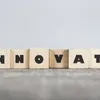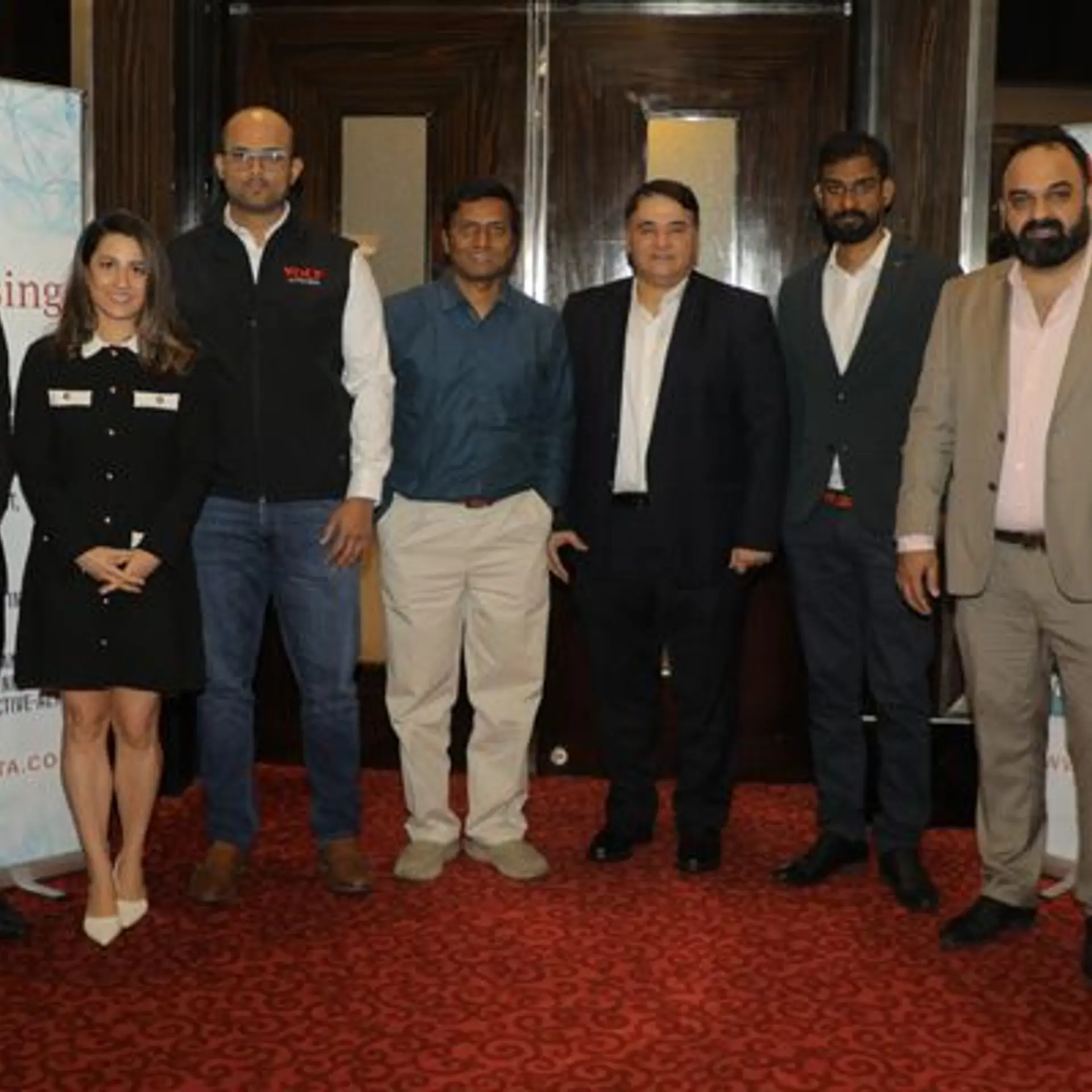‘Everyone is experimenting, and that reduces the risk’ – pandemic resilience insights from Patrick Schwerdtfeger, author, ‘Pandemic, Inc.’
Change and chaos are also times of opportunity. This author explains the importance of having a resilience mindset, and taking steps towards business model reinvention.
Business futurist and author Patrick Schwerdtfeger describes eight trends that have been triggered or accelerated by the coronavirus pandemic, in his new book Pandemic Inc. (see my book review here). A graduate of Canada’s Carleton University, he is now based in California. His earlier book on AI and blockchain was Anarchy, Inc.
The eight trends are captured in the catchy acronym SALVAGED: self-sufficiency, analytics, liquidity, virtualisation, automation, government, exponential thinking, and decentralisation. The book begins by sketching some of the grim realities of the pandemic era, before moving on to emerging opportunities.
In this interview, Patrick shares examples of resilience, the experimentation mindset, and the importance of embracing uncertainty.
Edited excerpts from the interview:
YourStory [YS]: In the time since your book was published, what are some notable new digital trends or case studies you have come across?
Patrick Schwerdtfeger [PS]: The virtualisation of education has been dramatically fleshed out since I published the book. Most colleges and universities are offering virtual classes, but virtual classes vastly diminish the benefits of attending college or university.
The biggest benefit of physical attendance is the networking element. Students socialise with their peers, developing life-long friendships along the way. Without that element, students see how thin the value proposition is. As a result, I expect the transition towards corporate online adaptive learning programs to accelerate even more than originally anticipated.
YS: What are three outstanding examples you have seen of resilience in the pandemic era?
PS: The beauty of our current circumstance is that everyone is pivoting. Everyone is trying new things. Everyone is experimenting, and that reduces the risk of doing so. It’s expected. It’s normal.
There has never been a better time to reinvent your business model. There has never been a better time to try new things, test new products, or introduce new services.
An Orange County-based corporate wellness company focused primarily on onsite health fares before the pandemic. Once the social distancing guidelines were introduced, they found suppliers for COVID-19 testing kits and started doing onsite testing for their corporate clients.
One client asked about Plexiglas dividers for their retail checkout stations. They did the research, found suppliers, and started providing and installing Plexiglas dividers. The second idea never would’ve come if the first idea wasn’t pursued.
Restaurants introduced online menus accessible with QR codes. That led to more online ordering, and that led to more remote ordering with delivery services. One idea led to the next.
The key is to start with one idea and let the journey reveal itself to you along the way. The more action you take, the more opportunities arise for additional ideas and pivots. Follow the breadcrumbs and see where they lead. Resilience is about being open to new opportunities.
YS: What do countries like the US need to do to reverse the alarming pandemic tide? It’s looming again in Europe as well.
PS: Pandemic restrictions don’t do well in a country that prides itself on freedom. The steps America needs to take are obvious. People need to wear masks, socially distance from each other, and wash their hands more often.
Unfortunately, the adoption of these simple tactics will never reach 100 percent, so continued spread is inevitable. The only question is how quickly it will spread. If adoption is higher, the spread will slow. If adoption is low, it will pick back up again. In the end, the widespread distribution of an effective vaccine is the only strategy that will put an end to this.
YS: How was your book received? What were some of the unusual responses and reactions you got?
PS: I was expecting readers to evaluate and/or question the trends I covered in the book. But instead, the feedback I received centered much more on the questions and suggestions I included for decision makers. The trends no longer represent a surprise, but the actionable strategies were perhaps unexpected.

YS: What is your current field of consulting? What kinds of services do you offer?
PS: I earn over 80 percent of my income in speaking fees, but, of course, that revenue stream has dropped almost to zero. I’ve done a number of virtual events, but the income potential is less than half of my regular fee structure.
In addition to conference speaking, I also facilitate executive strategy sessions for corporate leadership teams. The objective of these strategy sessions is to identify opportunities to disrupt adjacent industries, rather than waiting to be disrupted by others.
YS: What are the typical challenges entrepreneurs face as they scale from startup to growth stage? How can these challenges be addressed?
PS: In the very early stages of business creation, entrepreneurs invest far too much time and money developing products and procedures before they have tested marketing channels. Without marketing, no business will survive, so it makes sense to test different marketing channels before developing the logistical elements of the business.
Once a viable business model has been identified, the primary challenge usually revolves around cash flow, especially if the product or service finds eager buyers. Entrepreneurs need to secure financing sources to scale the business if it proves successful.
YS: How should innovators strike that delicate balance between ‘Stick to your vision’ and ‘Adapt to a changed world’?
PS: The value of a traditional “master plan” is diminishing. The world is changing too quickly. That’s why I discourage entrepreneurs from writing extensive business plans. The only step that has any reliability is Step #1. After that, accumulated insights and evolving circumstances will dictate the next steps.
The “stick to your vision” approach is increasingly unrealistic. Instead, entrepreneurs should test Step #1 in the marketplace and then trust that Step #2 will reveal itself once Step #1 has been completed. And Step #3 will reveal itself once Step #2 has been completed. Entrepreneurs need to continuously adapt to our changing world.
I never planned to write my Pandemic, Inc. book. One of my clients asked me to discuss the changing landscape with their leadership team. In preparation for that, I developed some initial content, recorded a short video, and shared it on social media to get feedback.
Someone in my network is a producer for a local TV station, and she asked me to come on to their morning show. The interview went very well, so I notified my public relations contact and let her know about this new content. She booked three more interviews.
It was only after those interviews that I decided to compile the content into a book. Writing the book was Step #5. Doing the research was Step #1, recording the video was Step #2, sharing it on social media was Step #3, and doing the TV interviews was Step #4. There was no plan, but each step led to the next, and the book was the final result.
It can indeed be useful to have a long-term vision, but businesses should focus mostly on the immediate term and allow their direction to shift with market demand and customer feedback. You never know where you’ll end up.
YS: When data and evidence are shifting so fast, how should companies improve their strategies to extract knowledge from this information overload?
PS: Gleaning insights from data is difficult, especially when circumstances and behaviors are changing so quickly. Companies need to find cheaper and quicker ways to test ideas while simultaneously monitoring use cases and success stories from within their industry.
What insights are your competitors leveraging? What would make those insights even more powerful? Companies can learn as much from their competitors as they can from their own efforts.
One of the easiest ways to exploit new opportunities is to monitor the technology releases by the enterprise software providers. ERP and CRM companies are constantly adding new capabilities to their platforms, and those additions are prioritised by customer demand. Data visualisation dashboards, Internet of Things (IoT) applications, and artificial intelligence are examples. All three are now incorporated into current capabilities.
Most companies that use ERP software only utilise a small fraction of the platforms’ true capabilities. The lowest-hanging fruit is to get more training for internal users and better utilise the software they’ve already paid for. In most cases, there are ample opportunities right under their noses.
YS: What are the key mindsets that business leaders should adopt in an era of such uncertainty? How do these mindsets map onto skillsets?
PS: Uncertainty is where opportunity resides. Business leaders need to embrace uncertainty and resist the urge to plan too far into the future. While a long-term company vision helps align employee motivation, specific steps will inevitably be calibrated and modified along the way.
Each step leads to the next. Take a step in the direction of your vision, and trust that the next step will become obvious once you finish the first. In the stock market, a common phrase is to “trade the chart in front of you” and the same concept applies to business.
Executives and decision-makers need to constantly evaluate their current circumstances and incorporate lessons learned into new actions taken. Pivot quickly and iterate towards success.

YS: What is your next book going to be about?
PS: I have no idea. Like my advice to others, I am evaluating where my work adds the most value and will take the next steps when they reveal themselves to me.
YS: What is your parting message to the startups and aspiring entrepreneurs in our audience?
PS: This is a time of enormous opportunity. Change creates opportunity, and everything is changing these days, but it will take bold leaders who thrive amidst uncertainty to redefine our economy.
It’s virtually guaranteed that the Teslas and Amazons of 2030 took huge strides during the pandemic. They will have found ways to satisfy customer desires without subjecting them to unnecessary risks. Better still, they will have found ways to make customers feel safe and secure despite the storm clouds and chaos outside.
The truth is that the chaos is just beginning, and the solutions have yet to emerge. That spells opportunity as far as the eye can see.
Edited by Teja Lele









